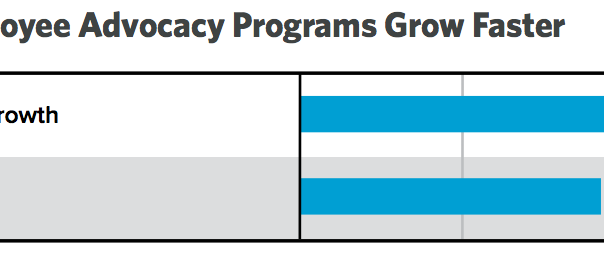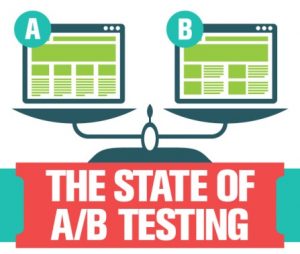Firms know there’s an opportunity to turn their employees into brand ambassadors via their personal social networks. The practice is called employee advocacy — the promotion of a firm’s brand by its employees. But to be successful, it must go deeper. A firm must instill a culture of belief in the content they create and active engagement in discussions on social networks.
Employee advocacy is not new. After all, employees have been developing relationships over appetizers and refreshments at networking events for decades. What’s changed is that firm associates can act as brand advocates anytime, anywhere courtesy of digital social media platforms.
While many leaders recognize that online employee advocacy has potential, they also worry about the potential downsides of losing control of their brand. Firm leaders want to know how valuable employee advocacy is, and whether it’s worth instituting a formal program. And if it’s the right thing to do, how should they go about it.
To find the answers, Hinge Research Institute teamed with Social Media Today. Together, we conducted a comprehensive online survey of 588 professionals who use social media for business purposes. Most (83%) were operating in the B2B space. The objective was to explore the potential of employee advocacy so companies like yours could make well-informed decisions.
Employee Advocacy Adoption
We asked respondents how their firms were approaching their employee advocacy programs. Three out of 10 were not currently considering employee engagement on social media. Over 60% were considering their options for employee engagement. Two in 10 were pilot testing different approaches. And,16.6% had implemented a formal, comprehensive program.
Employee Advocacy Benefits for Firms
Over 96% of respondents identified benefits that they are reaping from employees’ engagement on social media. Increased visibility and brand recognition were the top two benefits. Firms also noted other measurable benefits including increased web traffic, better search engine rankings, more content downloads and decreased marketing costs.

Those with more sophisticated employee advocacy programs reported they are receiving more benefits from them. Firms with a formal program identified an average of 5.19 benefits, compared to 2.81 benefits for firms not considering employee engagement on social media.
Does Employee Advocacy Impact Firm Growth?
High growth firms, those with revenue growth greater than 20%, were more than twice as likely as all other firms to have an employee advocacy program.

High growth firms are also more likely than their slower growing counterparts to say a formal employee advocacy program helps to shorten sales cycles (27.1%). Also, employee advocacy is an important component of social selling. Nearly 64% of firms with formal employee advocacy programs credited them with attracting and developing new business, and nearly 45% attribute new revenue streams to employee advocacy.
Employee Advocacy Is Good for Employees Too
Employee advocacy affects employees in a positive way too. Almost 86% of advocates in a formal program said that being involved in social media had a positive impact on their career.
Two of the most common benefits to employees were expanding their professional networks and enabling them to keep up with industry trends. Other noteworthy benefits include the ability to develop skills that are in high demand, differentiate themselves from their peers and become recognized as thought leaders.
Interestingly, Millennials are more likely to view engagement on social media as an opportunity to enhance their career than either Gen Xers or Boomers. Perhaps, for them, it’s just the natural way to connect with others.
How to Build an Employee Advocacy Program
If you are ready to implement an employee advocacy program, do not assume that your employees know how to use social media in a business environment. That’s where the danger lurks.
Sadly, nearly ¾ of respondents said that they had not received any training on how to engage professionally on social networks. On the other hand, more than half of firms with formal employee advocacy programs, those most likely to be successful, provide social media training.
When asked to identify what training would be most beneficial, using social media to create engagement topped the list. Other leading educational topics on the wish-list included social media training for specific social channels, content marketing strategy, and generating and nurturing leads.
Respondents also wanted training on how to motivate employees to become brand advocates on social media. So how should you do that? Firm associates believe that communicating the importance of social media provides the biggest incentive to participate. After all, employees want to know their efforts will pay off.
Business & Finance Articles on Business 2 Community
(107)
Report Post










